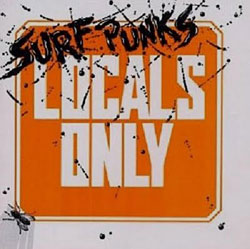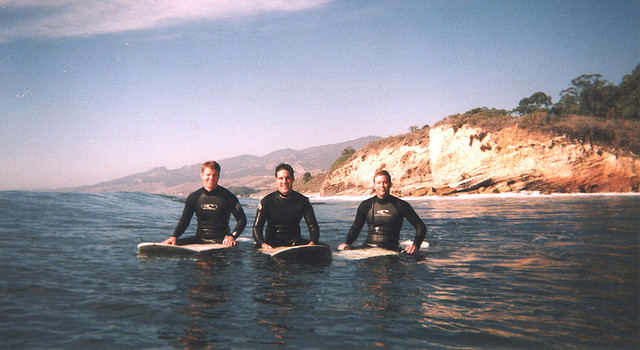Posted on December 16, 2013
2013 Year in Review Lists in Review
I’ve had a Tumblr account for a long time but never had done anything with it. Guess I couldn’t think of anything worthy of tumbling.
But every December I toy with an idea to aggregate as many Year in Review lists that I can find. As a former writer and editor of such lists, I’ve always had a love/hate relationship with the things. They’re easy to complete since any research is all internal, but they’re difficult to create since you need to find the stuff that readers would actually want to reminisce with.
Today, every media outlet cranks these end-of-year lists out. Online, lists are obviously the content du jour. They’re easy for a staff to complete during what’s usually a down-time of year, and they tend to drive some traffic during what’s also generally a low point in the year, in terms of site visits. And we all know sometimes lists go viral.
So the other day it occurred to me: 2013 lists + Tumblr = the perfect aggregation format. I created Listwatcher. Let’s see how many unique end-of-year lists we can find…
Updated on November 8, 2013
We’re here, we park next to you, and we’re not going home
Trying to get this blog going again with a redesign, and something fired me up today. Read on.
Santa Cruz Waves is usually quite good at showcasing the strong and prideful community of the world-class Santa Cruz surf scene, and the people that make it so… communal. Did you post this drivel (You can’t surf here, go home.) just to fire people up and get some extra clicks? If so, well done!
 Your post could have been informative about nuances in local etiquette, or how newbie surfers might work their way into a lineup, or ways outsiders can still enjoy themselves by knowing how a break works. Instead, Jack Neenan sounds like a bitter old man telling the kids to get off his proverbial lawn.
Your post could have been informative about nuances in local etiquette, or how newbie surfers might work their way into a lineup, or ways outsiders can still enjoy themselves by knowing how a break works. Instead, Jack Neenan sounds like a bitter old man telling the kids to get off his proverbial lawn.
Surfers hear this localism crap all the time but guess what? The sport is growing and more people keep showing up at your spot. It’s the problem for the surf ages. Surfer Magazine even tried to tackle the subject last month, and didn’t do a very good job at it.
I don’t live in Santa Cruz. Worse, I live Over the Hill (a topic for another post). But I surf in and around town regularly, as I have been doing — all over the central coast for that matter — for 20 years plus. Now I’m teaching my kids to enjoy the water and when surfing what good etiquette is all about. The author makes the point finally at the end that if you show respect, you get respect. He’s right about that. It works in the water, and it works in life in general. It’s a simple rule that even my kids can grok.
Mr. Neenan, dude, we’re already here. We surf next to you every day, we park our cars next to you all the time. Sometimes we even talk to you in the lineup. It’s usually all fun until someone with this kind of grumpy attitude paddles out and wrecks the good vibes. Even still, I’ll share a peak with you, because it’s the right thing to do and I’m not going home.
Updated on November 21, 2012
On ‘The Twenty’
I spent five years of college in San Luis Obispo, most of which included surfing everywhere imaginable in SLO County. While my friends and I had plenty of great waves and sessions nearby, it’s also a fickle stretch of coastline that lent itself to many, many disappointing drives back and forth to the beach.
So we started to stretch out. Some days, with nothing better to do and knowing the waves were small or the wind wasn’t cooperating (which is often in SLO), we’d hop in a car with our boards and just drive. Sometimes we’d go all day, from Morro Bay to Santa Barbara. We found some pretty amazing and weird spots going up and down the coast. This was pre-Google Earth. We just had a AAA map in the glove box to show the way and plenty of free time.
My surfing roommates were from Southern California and my girlfriend was from Santa Barbara, so I started to spend more time exploring everything between Leo Carillo to the south and Gaviota to the north. I logged a lot of time on Hwy. 1 between Santa Barbara and SLO. It’s a gorgeous drive once the highway turns along the edge of the land, with numerous pullouts next to the railroad tracks that run alongside the road. Empty paths lead to the cliffs or down to the sand. There was hardly anybody around.
Flash forward 15 years. Me and my old friends get together every fall for an annual surf trip. We’re spread out now, so we pick a place to camp along the coast. We meet there, we drink a lot of beer, and we surf as much as possible. For a number of years, we camped at El Capitan State Park and got to know the nooks and crannies that lie within five miles of the park. We stumbled upon a beach called Tajuigas, which seems to be better known as a dive/snorkel spot. Sometimes, it turns out, the waves get good there and there’s nobody else in the water (except for when the photo in this post was taken, in 2003). Shhh!
 It’s amazing that you can still find places like this in Southern California. That’s why when I found out about the Surfrider Foundation’s effort to create a documentary about the land battles happening on the Gaviota coast, I couldn’t help but chip in and help fund The Twenty. It’s named after the 20 miles of undeveloped coastline that exists there. It’s my first donation to a Kickstarter project. I’m no local of the place, but my son is starting to get interested in surfing, and me and my friends are still camping every year. It has given me so much. This open place needs to be protected so that we can continue to use it and explore its unspoiled beauty. There’s no place like it in Southern California, and perhaps the entire state.
It’s amazing that you can still find places like this in Southern California. That’s why when I found out about the Surfrider Foundation’s effort to create a documentary about the land battles happening on the Gaviota coast, I couldn’t help but chip in and help fund The Twenty. It’s named after the 20 miles of undeveloped coastline that exists there. It’s my first donation to a Kickstarter project. I’m no local of the place, but my son is starting to get interested in surfing, and me and my friends are still camping every year. It has given me so much. This open place needs to be protected so that we can continue to use it and explore its unspoiled beauty. There’s no place like it in Southern California, and perhaps the entire state.
Ironically, there has been active oil exploration going on there since the early 1920s, and the oil platforms loom large offshore. It’s not uncommon for little globs of tar – natural, or maybe not – to get stuck on your board, wetsuit and feet. It’s all a minor annoyance for a visitor, but a reminder that civilization is very much nearby and it is encroaching. It’s disturbing to think that the coast could be fully developed, to be turned into more resorts and golf courses, and to really let civilization have their way with the place. Let’s hope it stays as pure as possible.
Updated on November 1, 2012
PM Life: Star Wars Gangnam Style
So, this happened at the Coupons.com Halloween party yesterday. It was my first event — I had been warned that the company goes big for the holiday. It didn’t disappoint, and neither did our PM team.
Updated on July 11, 2012
Culture vs. the Internet
